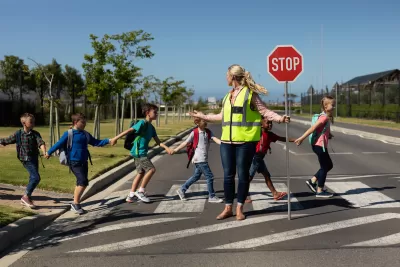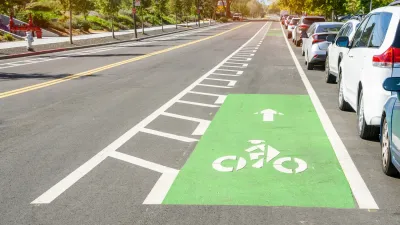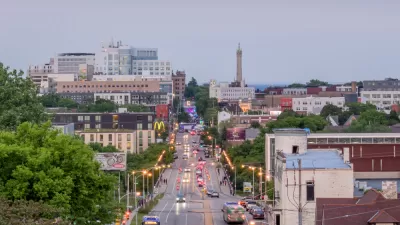The agency will distribute $15 million for the development of AI applications that further safe transportation infrastructure.

“The Department of Transportation is allocating $15 million in federal funding for small businesses to take advantage of artificial intelligence systems and create new applications specifically for the U.S. transportation sector,” according to an article by Alexandra Kelley in NextGov.
The Small Business Innovation Research Program “is intended to foster decision-support tools for state and local governments that can help design and deploy a network of Complete Streets, a longstanding agency initiative to support the construction of livable, connective public streets.”
USDOT hopes new technology can help bridge data gaps to help cities assess their existing pedestrian and bike infrastructure and plan improvements.
According to Kelley, “The AI systems themselves will likely be formed from a suite of interactive data analytics tools intended for city and urban planning professionals. In addition to automation, other advanced technologies Transportation is looking for include systems operating on the internet-of-things; satellite, aerial or street-level videography; and computer vision.”
FULL STORY: Transportation launches $15M AI effort to improve US street infrastructure

Maui's Vacation Rental Debate Turns Ugly
Verbal attacks, misinformation campaigns and fistfights plague a high-stakes debate to convert thousands of vacation rentals into long-term housing.

Planetizen Federal Action Tracker
A weekly monitor of how Trump’s orders and actions are impacting planners and planning in America.

In Urban Planning, AI Prompting Could be the New Design Thinking
Creativity has long been key to great urban design. What if we see AI as our new creative partner?

How Trump's HUD Budget Proposal Would Harm Homelessness Response
Experts say the change to the HUD budget would make it more difficult to identify people who are homeless and connect them with services, and to prevent homelessness.

The Vast Potential of the Right-of-Way
One writer argues that the space between two building faces is the most important element of the built environment.

Florida Seniors Face Rising Homelessness Risk
High housing costs are pushing more seniors, many of them on a fixed income, into homelessness.
Urban Design for Planners 1: Software Tools
This six-course series explores essential urban design concepts using open source software and equips planners with the tools they need to participate fully in the urban design process.
Planning for Universal Design
Learn the tools for implementing Universal Design in planning regulations.
Gallatin County Department of Planning & Community Development
Heyer Gruel & Associates PA
JM Goldson LLC
City of Camden Redevelopment Agency
City of Astoria
Transportation Research & Education Center (TREC) at Portland State University
Jefferson Parish Government
Camden Redevelopment Agency
City of Claremont





























